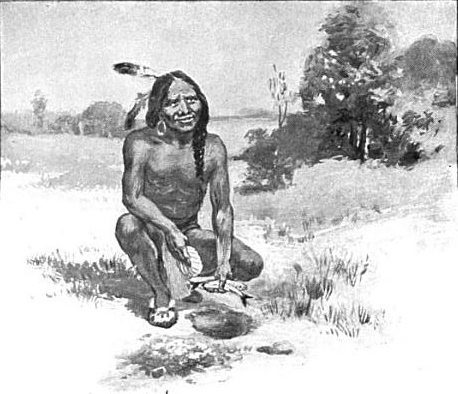Now I will admit that I am so fascinated by Native American culture. I don't know if it is the drop or so Native American blood I have in me--my grandfather always said someone along the way married a Native American (well he used Indian), but I don't know much more than that. My sister however does and she found out recently that our Native American ancestor answered Lincoln's first call for soldiers for the Civil War. I love to learn about the way different tribes live(d) and hear the stories. I love them so much I took a class on Native American Culture in college. Anyway, I guess I'm working on passing on my love to Hazel.
We have been reading many books about Native Americans--Wampanoags in particular--as well as much on Squanto. I have learned so much that I never learned in school. Now with many things in history, there are different versions in the books as well as on-line. Here is what seems to be the most widely viewed. Tisquantum or Squanto was a member of the Patuxet Tribe and was kidnapped at age 12 by Europeans led by Captain Thomas Hunt. Squanto and his fellow braves were taken to Malaga, Spain and sold as slaves. Squanto however was bought by monks who believed God had other plans for Squanto. He spent five years with the monks and learned their language and their religion. Then the monks sent him to England so he could eventually go home on a ship there. More ships sailed to the New World from England than Spain. They arranged for him to live with a merchant, John Slany, and his family. He learned English there and was amazed by the large city of London. About five years after arriving in England, Squanto was able to go home on John Smith's (of Pocahontas fame) ship led by Captain Thomas Dermer. Squanto had known Captain Smith and Captain Dermer from trading with them as a boy. Squanto was able to translate for the English when they came to Native Americans and thus was useful and worked for his journey.
 |
| Source: By The German Kali Works, New York [Public domain], via Wikimedia Commons |
 |
| Samoset greeting the Pilgrims |
 To go with learning about the Native Americans in the Thanksgiving story, we made a simple Native American craft for our Thanksgiving table. We followed the instructions in Kathy Ross' book, Crafts for Thanksgiving. We used a paper towel roll and construction paper to make Native American headdress napkin rings.
To go with learning about the Native Americans in the Thanksgiving story, we made a simple Native American craft for our Thanksgiving table. We followed the instructions in Kathy Ross' book, Crafts for Thanksgiving. We used a paper towel roll and construction paper to make Native American headdress napkin rings.
We also made a strawberry corn bread. The recipe came from Thanksgiving Crafts by Judith Hoffman Corwin. The introduction to the recipe discussed how the Native Americans had thanksgiving festivals. This recipe might be used for a strawberry festival. Hazel did not like the bread, Steve did and I thought it was all right. I of course made it gluten free. It was made with frozen strawberries (but thawed) and I used the entire bag instead of measuring them out. I am glad I did because it had very little liquid in the recipe.
For more Native American posts check out Pocahontas, The Wampanoag Tribe, A Native American Cinderella (includes two books and a craft), Native American Cinderella 2 (two more similar stories), and The Turkey Girl, a Zuni version of Cinderella.






